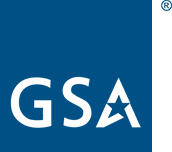Engagement overview
Our work with government partners is the primary way TTSC delivers on our mission. This work is how we help agencies modernize technology systems and build their staff’s capacity.
Historically, 18F has referred to this work as “projects” and CoE has called them “engagements.” As part of our realignment, we are standardizing this language:
- Projects are focused around addressing a specific service challenge or problem
- Engagements are generally a broader effort which can contain one or more projects
Both require deep alignment and support of the partner, and can be staffed with 18F people, CoE people, or a combination of the two.
Engagements for both 18F and CoE generally move through the same phases:
Some notes on engagement phases:
-
All of these phases may or may not occur within the same agreement with a partner. They may also be spread out over multiple agreements.
-
This is the most common pattern of phases. However, engagements may need to run activities in a different order, or iterate back and forth between phases.
-
We balance project management, delivery, and capacity building throughout these phases to meet the partner’s needs and achieve our mission.
-
The Implementation phase frequently includes some kind of acquisition (either an assisted acquisition operated by TTS Consulting, or acquisition consulting with a partner’s acquisition folks). The sequence and duration of acquisition work depends on the needs of the partner. CoE tends to do the acquisition work right at the beginning of Implementation, while 18F typically does any acquisition work in parallel with the Implementation activities conducted by our fed team.
-
Depending on the phase and scope of your project, there are various standards for delivery and compliance that your team needs to adhere to. When relevant to common activities, laws, regulations, standards, and/or best practices are highlighted.
Set up
In the set up phase, our goals are to:
- Understand the scope of problem (identify the organizational problem or need) and pitch how TTS Consulting can help
- Set expectations on the level of effort, team composition, and cost to our partners
- Establish a legal agreement to provide funding for a team
- Onboard the team and bring them up to speed on expectations set
To achieve these goals, we typically:
- Identify and qualify new engagements in business and partnership development
- Establish productive relationships and partnerships
- Process agreements and SOWs
- Prepare our partners to work with us
- Start tracking finances
- Staff people to the engagement
- Kick off the engagement team
- Clarify roles and responsibilities in the team
- Define the tools the team will use to work together
- Start internal reporting
We know we have been successful when:
- TTSC has the authority, funding, and staff to conduct an engagement
- The team can bill against inter-agency agreement (IAA)
- Partner and engagement team know the scope that was agreed upon
Discovery
In the discovery phase, our goals are to:
- Validate the problem or need with end users to reduce risk of failure in future phases
- Recommend a path forward for the partner to deliver on their problem
To achieve these goals, we frequently:
- Conduct desk and user research
- Synthesize findings and recommendations
- Track progress and risks
- Create demos, presentations, and reports
- Manage blockers, escalations, and scope adjustments
- Get and manage contractor support
We know we have been successful when:
- Research validates the core problem or need (or the problem or need is shifted to match the research), and the partner understands and trusts the research performed
- The first slice of implementation is identified and validated, and the partner is aligned on this path
- An assessment of the organization’s maturity is conducted and the first slice of capacity building is identified
- Recommend who will deliver first slice of implementation — 18F team, industry partner, or other
Implementation
In the implementation phase, our goals are to:
- Build trust in the path forward by delivering on the first slice of work
- Continuously validate and correct the delivery path to de-risk overall effort
- Enable partner to continue the work after TTS Consulting departs
To achieve these goals, we frequently:
- Run an acquisition
- Teach our partners skills to manage digital services
- Evaluate engagement impact
- Develop and begin executing a transition plan
- Build a website or software
- Launch a website or software
- Advance larger modernization efforts
We know we have been successful when:
- Functioning software, feature, or product is delivered to partner and end users
- Research validates what is delivered with end users
- Implemented software, feature, or product is released, deprecating previous system if applicable
- Partner capacity and capabilities increased through training, hiring, or other means
- The transition plan is clear and feasible
Handover
In the handover phase, our goals are to:
- Reduce dependency on TTSC so partner can continue digital modernization work
- Prepare TTSC and partner to speak to the outcomes achieved
- Document and share what we have learned together
To achieve these goals, we:
- Develop talking points and share our work
- Complete the transition to partner
- Complete closeout tasks for the engagement
We know we have been successful when:
- Partner is fully operating product without TTSC support and tools
- Case studies, blog posts, or talking points are prepared for both TTSC and the partner to describe the outcomes achieved
- TTSC practices are updated based on lessons learned if applicable
- Engagement is administratively closed

